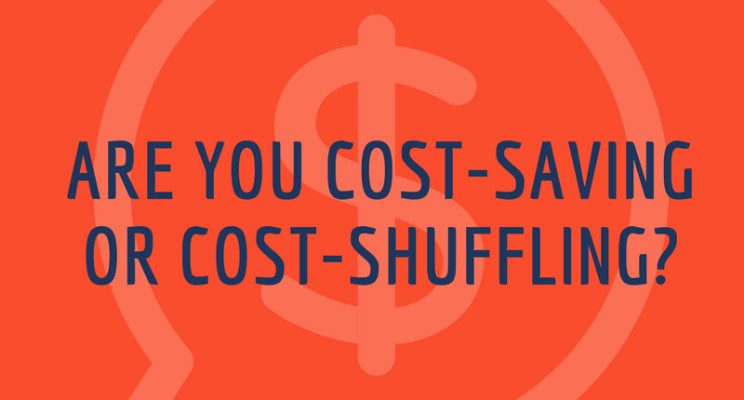The Future of Healthcare is 3 Letters: CVS
Healthcare
There’s a lot of speculation surrounding CVS’s acquisition of Aetna that’s planned for 2018. But one thing we know for certain is that CVS’s direction in 2018 will make an enormous imprint on healthcare in the U.S. as we know it.
On December 3, CVS announced their agreement to acquire Aetna, the nation’s 3rd largest insurer, for $69 billion. To put the sheer magnitude of a deal like this into perspective, this deal would be the largest in the history of health insurance. CVS is currently a Fortune #7 company with an annual revenue of $177.5B; Aetna is #43 on Fortune’s list with an annual revenue of $63B. According to the current Fortune 500 list, the merged CVS/Aetna would have the 2nd highest annual revenue, second only to Wal-Mart.
CVS has expressed the desire for this acquisition to improve the integration of patient care, and to provide higher quality care at a lower cost in “communities, homes and through the use of digital tools to support health.” CVS’s President and CEO Larry Merlo communicated the desire to put customers “at the center of health care delivery.” The intent would be to leverage CVS’s 9,700+ retail stores and 1,100 Minute Clinics to create community-based centers that include resources for wellness, medical, pharmacy, vision, hearing and nutrition services. And the touted benefit of acquiring Aetna is that integrated care and higher negotiation power for pharmaceutical drugs is the key to lowering costs.
This deal is projected to happen in the second half of 2018. At this point, it is unknown whether the acquisition will face anti-trust opposition. While vertical mergers (which combine 2 companies which are not direct competitors) don’t traditionally get blamed for stifling competition, CVS’s announcement comes on the heels of the Justice Department’s block of AT&T’s takeover of Time Warner, citing the acquisition would create “too powerful of a content company.” And with 2 recent horizontal healthcare deals halted for antitrust reasons (Aetna/Humana and Anthem/Cigna), CVS’s Aetna deal will need to pass through close scrutiny in Washington before the deal can be finalized. In October, Trump declared “My administration will…continue to focus on promoting competition in healthcare markets and limiting excessive consolidation throughout the healthcare system,” though many are betting that this vertical deal will go through with only the requirement of some concessions by CVS and Aetna.
My predictions for 2018? One of two things will happen.
Possibility #1: Regulators block CVS’s Aetna acquisition
What is to stop regulators from saying that this deal will create “too powerful of a healthcare company?” This is indeed a possibility, albeit one that many think is unlikely. But in this past year alone, the Federal Trade Commission blocked Walgreens’ purchase of Rite Aid, while the Justice Department intervened to prevent Aetna’s acquisition of Humana and the Anthem/Cigna merger. While these were considered horizontal deals among competitors, the Department of Justice blocked these deals because they would drastically restrict competition and “fundamentally reshape the insurance industry.” Would the CVS/Aetna deal not also do the same thing?
If this acquisition is blocked, it signifies that the regulatory tide could be changing with respect to how the largest players in healthcare can evolve. With the “big five” insurers, which cover approximately 90% of all commercially insured Americans, unable to strategically gain market share through jumbo mergers and acquisitions, this opens up the door for new entrants into healthcare markets who are better at solving healthcare’s problems than their behemoth counterparts. It also encourages existing competitors to home-grow solutions in their organizations rather than joining forces with outside partners.
Possibility #2: CVS’s Aetna acquisition moves forward in 2018
Let’s imagine for a moment that the deal does go through as planned. The likely next step is that Express Scripts, the only other big PBM not owned by an insurer, will merge with a health insurer like Humana, and may even buy its own pharmacy chain such as Walgreens. This trend would change the landscape of healthcare, giving all power to a few vertically integrated giants, and putting any smaller PBMs or insurance companies at a crippling competitive disadvantage.
CVS’s vision of transforming local retail stores into community health centers where people can not only pick up prescriptions, but also see a doctor, talk to a nutritionist, or receive vision care is a compelling evolution of the way we seek self-care. This type of model could be the answer to the convenience that people want with telemedicine, but it breaks down the barriers to full adoption by putting a community-based centralization on the care they receive.
As we consider these two possibilities, we should ask some big questions.
- Do companies become more innovative when they get bigger?
- Do competitive moves like this help to fight the steadily rising costs of healthcare?
- Will this improve the quality of care that people receive?
Whether 2018 is the year that the CVS/Aetna merger moves forward, or whether 2018 is the year that the CVS/Aetna deal is blocked, either way will lead to a crossroad that will signify the next evolution for healthcare in America. The promise of the benefits to consumers—transforming retail stores into hubs for health services and potentially better prices as a trickle-down benefit from improved negotiation power with pharmaceutical manufacturers—paint a compelling picture for what the future of American healthcare could be. Only time will tell whether consumers will be the winner in this deal, whether the winner will be the shareholders, or whether we’ll never get to find out.
* * *
BetaXAnalytics is a healthcare data consulting firm that helps payers and providers to maximize their CMS reimbursements and helps employers to reduce their healthcare spending through proven strategies to contain costs. For more insights on using data to drive healthcare, pharmacy and wellbeing decisions, follow BetaXAnalytics on Twitter @betaxanalytics, Facebook @bxanalytics and LinkedIn at BetaXAnalytics.












